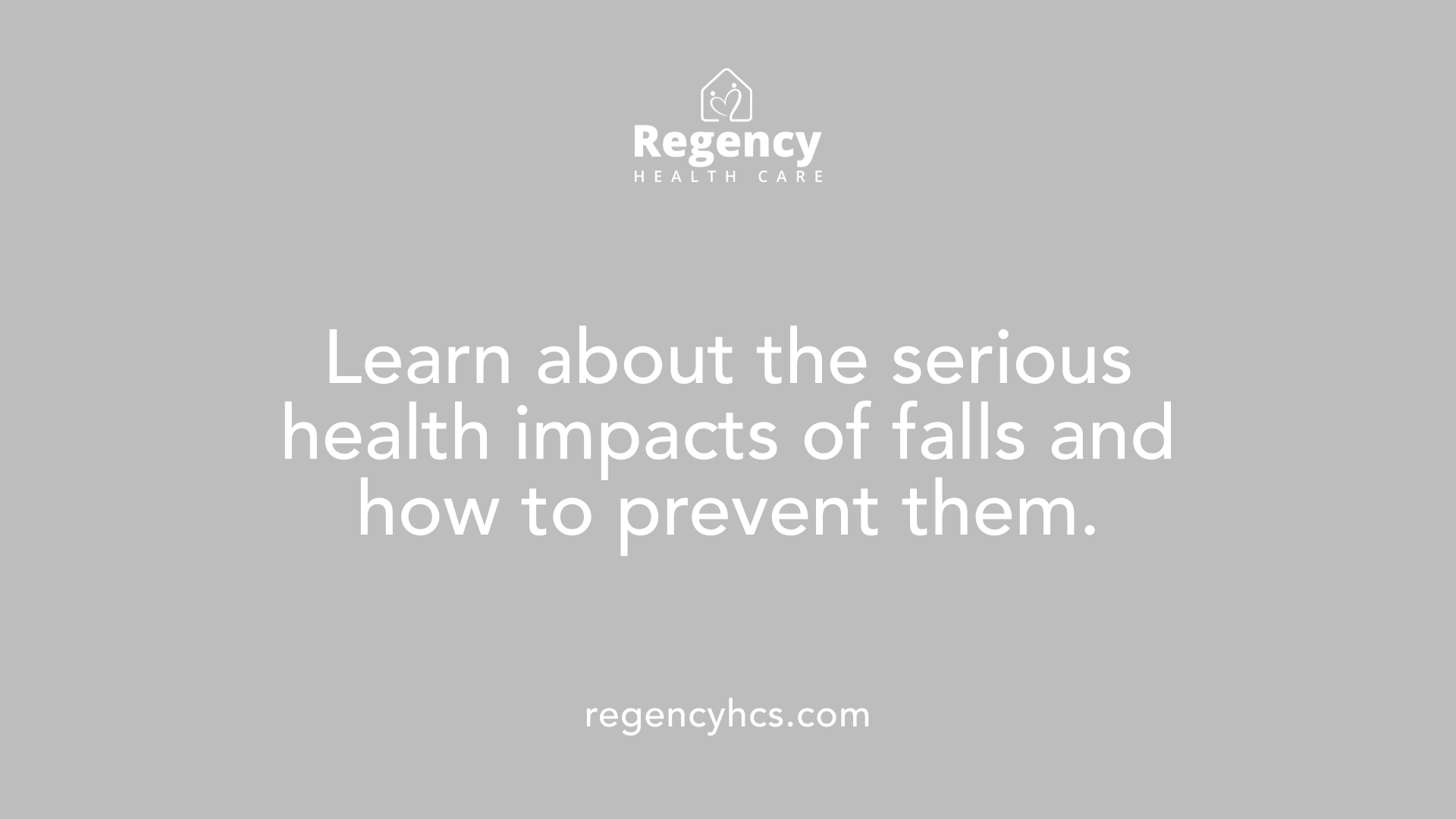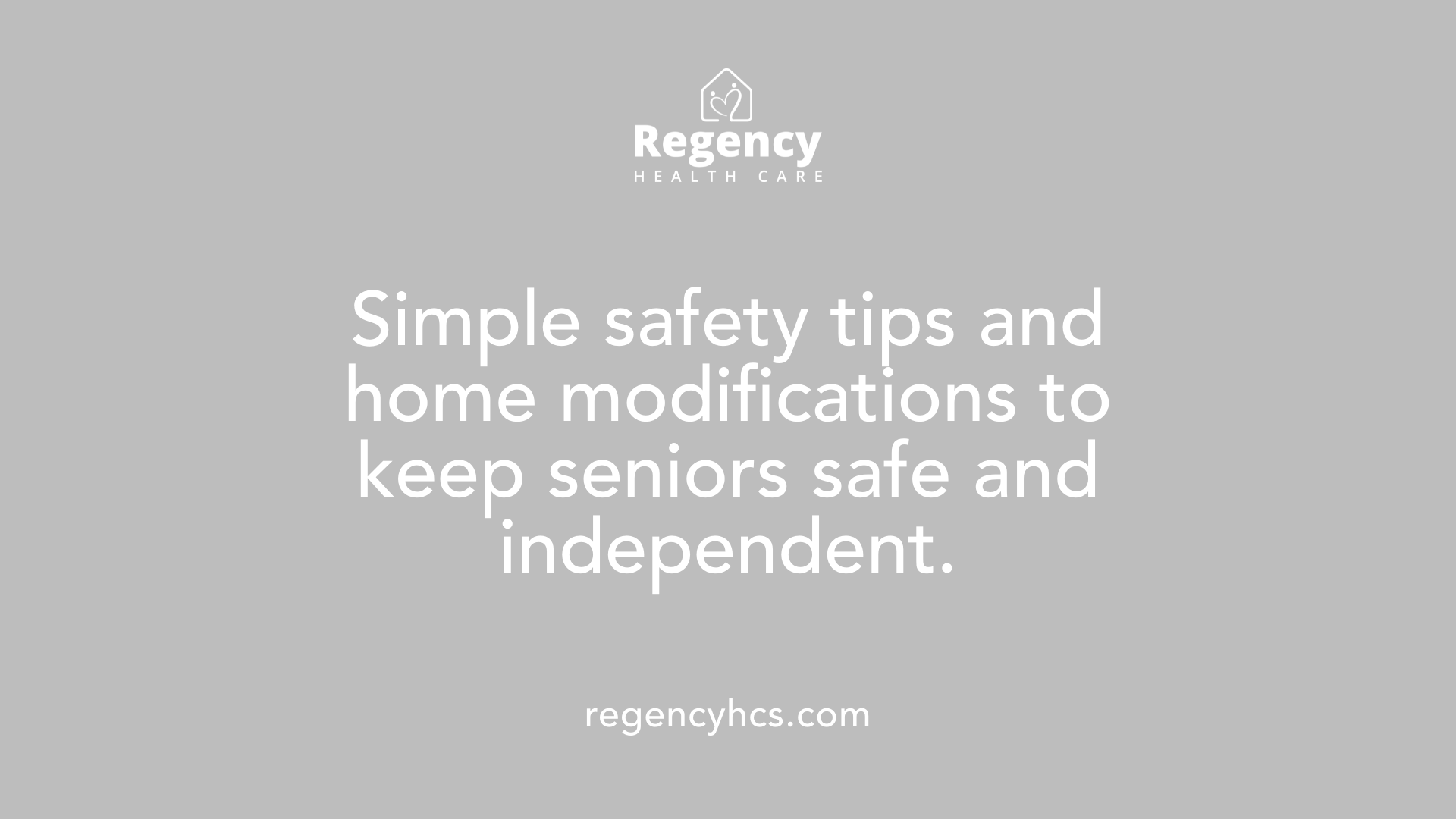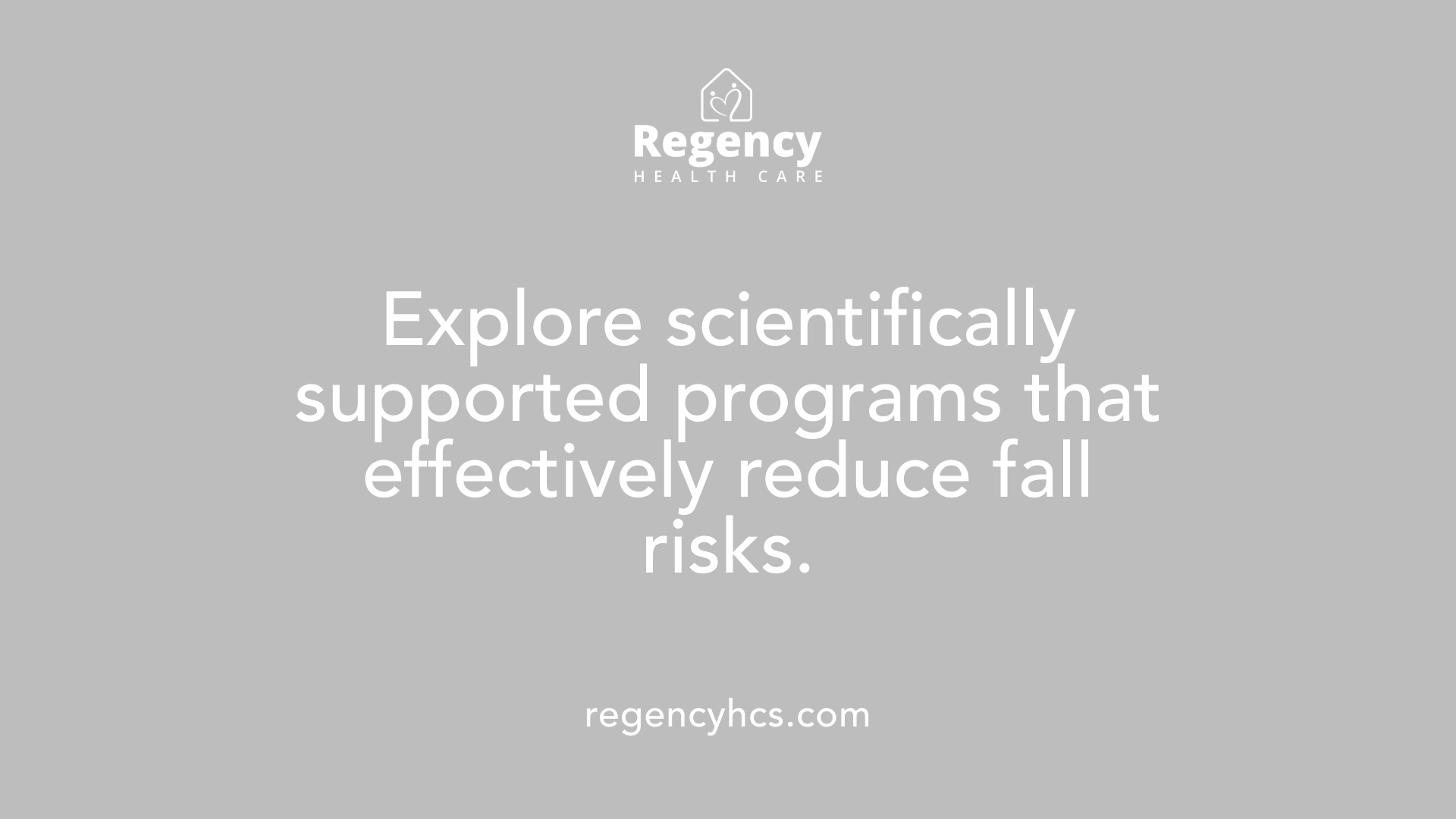Why Fall Prevention Matters in Home Settings
Falls are a leading cause of injury and death among older adults, representing a significant health concern that jeopardizes independence and quality of life. With over 25% of individuals aged 65 and older experiencing falls annually, implementing effective fall prevention strategies within home care services is essential. Preventing falls not only reduces the risk of serious injuries such as fractures and head traumas but also helps maintain mobility, confidence, and overall well-being, allowing older adults to live safely and independently at home.
Understanding the Risks and Consequences of Falls

Why is fall prevention important for older adults?
Falls are a major concern for older adults because they are the leading cause of injury, disability, and death in this population. Statistically, over 25% of adults aged 65 and older experience a fall each year. These incidents often result in serious injuries like broken bones and traumatic brain injuries, which can lead to long-term hospitalization and a diminished ability to live independently.
Many falls are preventable through effective strategies. Exercise programs that enhance strength and improve balance are critical, along with home safety modifications such as installing grab bars, ensuring proper lighting, and removing tripping hazards. Regular health checkups, especially vision and medication reviews, can help address medical risk factors. Addressing common issues such as muscle weakness, poor vision, and hazards within the home environment plays a significant role in reducing fall risks.
Preventing falls helps older adults stay active, safe, and retain their independence longer. This proactive approach to safety not only minimizes injury but also enhances overall well-being, allowing seniors to maintain their quality of life.
What are the risks and consequences of falls among older adults?
Falls can have severe health consequences for the elderly, including fractures—particularly hip fractures—and traumatic brain injuries. These injuries often result in long-term disability, which impacts mobility and independence.
Statistics show that one in four adults over 65 falls annually, with the risk increasing sharply with age. Factors such as muscle weakness, impaired balance, reduced vision, chronic health conditions, and certain medications heighten the risk. Environmental hazards in homes and outdoor spaces, like poor lighting, loose rugs, and clutter, also contribute significantly.
Repeated falls are common, with about half of older adults experiencing more than one incident. These repeated falls greatly increase the likelihood of serious injury and hospitalization. Falls are the leading cause of injury-related deaths in this age group, and their impact extends beyond immediate injuries. They often lead to decreased mobility, increased dependence on healthcare services, and a sense of fear that discourages activity.
Addressing these risks through targeted interventions such as strength and balance exercises, medication management, and safer home environments can significantly reduce the incidence and severity of falls. By understanding the serious health implications, caregivers, healthcare providers, and seniors themselves can work together to implement effective prevention strategies.
Practical Safety Tips for Seniors to Minimize Fall Risks

What safety tips can seniors follow to prevent falls?
Falls are a significant concern for older adults, but many can be prevented through simple and effective safety measures. Regular health assessments with healthcare providers are crucial to identifying and managing risk factors such as impaired balance, vision issues, or medication side effects. Engaging in physical activities like Tai Chi, walking, or water exercises can greatly improve strength, flexibility, and balance, thereby reducing fall risk.
Wearing sturdy, well-fitting shoes with nonskid soles is another practical step to prevent slips and falls. Home modifications are vital; these include removing clutter, securing loose rugs, and installing grab bars and handrails on stairs and in bathrooms. Ensuring good lighting throughout the home, especially in stairways and hallways, along with the use of nightlights, helps seniors navigate safely at all times.
Assistive devices such as canes and walkers, when properly fitted and maintained, can provide additional stability. Regularly checking and maintaining vision and hearing health ensures that seniors stay aware of their environment. Finally, developing an emergency plan and practicing strategies for safely rising after a fall can make a difference in recovery and ongoing safety.
How can caregivers and family members help prevent falls?
Family members and caregivers play a crucial role in fall prevention by actively supporting a safe living environment and encouraging healthy habits. They should regularly review medications with healthcare providers to identify any side effects like dizziness or drowsiness that could increase fall risks.
Monitoring and addressing health conditions, including vision and hearing impairments, is essential. Caregivers can assist in conducting home safety assessments, removing hazards, securing rugs, and installing safety features like grab bars and proper lighting.
Supporting older adults in engaging in balance and strength exercises can significantly improve their stability. Maintaining open communication about fall risks and lifestyle factors is essential for creating tailored prevention strategies. Participating in healthcare appointments and using resources like the National Council on Aging's Falls Prevention Conversation Guide can help families implement comprehensive safety measures.
Prevention is a team effort that combines environmental adjustments, medical management, and active support to keep seniors safe at home.
Evidence-Based Practices and Programs in Fall Prevention

What are proven fall prevention programs and evidence-based practices?
Preventing falls among older adults relies on interventions supported by scientific research and clinical guidelines. These programs are designed to target physical, environmental, and behavioral risks.
Structured exercise programs like Tai Chi — especially Tai Chi for Arthritis and Ji Qi Moving for Better Balance — are proven to improve balance, strength, and coordination, significantly reducing falls. The Otago Exercise Program focuses on personalized strength and balance exercises tailored to older adults, showing notable success in decreasing fall risk. Stay Active and Independent for Life (SAIL) is another community-based program promoting physical activity that enhances mobility and stability.
Multifactorial approaches, including comprehensive home safety assessments, medication reviews, and customized risk evaluations, address several fall factors simultaneously. These practices are endorsed by organizations such as the Administration for Community Living (ACL) and the Agency for Healthcare Research and Quality (AHRQ).
Community initiatives like A Matter of Balance encourage behavioral change, build confidence, and help seniors overcome fear of falling. In clinical settings, fall prevention bundles involve risk screening, environmental modifications, and patient education, offering layered protection.
| Program or Practice | Focus Area | Evidence Base |
|---|---|---|
| Tai Chi for Arthritis | Balance, flexibility, strength | Strong evidence supporting fall reduction |
| Otago Exercise Program | Strength and balance training | Certified efficacy in clinical trials |
| Stay Active and Independent for Life | Physical activity promotion | Demonstrated to improve mobility |
| Home Safety Assessments | Hazard identification and modification | Supported by multiple health authorities |
| Medication reviews | Reduce side effects like dizziness | Part of multifactorial interventions |
| A Matter of Balance | Confidence building, fear of falling reduction | Widely adopted community program |
What is the 4 P's approach to fall prevention?
The 4 P’s approach stands for Pain, Position, Potty, and Personal Needs. It provides a simple yet effective framework for proactive fall risk management.
- Pain: Regularly assess and manage pain levels to avoid discomfort that could cause instability.
- Position: Ensure proper positioning of residents, including safe sitting and lying positions, and repositioning to prevent stiffness.
- Potty: Assist with bathroom needs to prevent falls during toileting, including timely and safe transfers.
- Personal Needs: Keep essential items within arm’s reach so residents do not reach or stretch unsafely.
Care staff incorporate these checks into regular rounding practices, helping to prevent falls and promote safety. Effective implementation requires proper training, prompt communication, and thorough documentation.
What is the impact of fall prevention on health outcomes and quality of life?
Reducing falls has a profound impact on the health and well-being of older adults. It prevents injuries like fractures and head trauma, which are associated with prolonged hospitalization, loss of independence, and increased mortality.
Maintaining mobility through preventive strategies allows older adults to remain active and engaged, which boosts mental health and social participation.
Fall prevention also addresses psychological aspects by reducing the fear of falling, which often leads to activity curtailment, social isolation, and depression.
While evidence supports many benefits, ongoing research continues to refine understanding of how various interventions improve quality of life.
Ultimately, effective fall prevention enables seniors to age safely and confidently, preserving their autonomy and enhancing their overall life satisfaction.
| Aspect | Impact of Fall Prevention | Supporting Evidence |
|---|---|---|
| Injury reduction | Fewer broken bones and head injuries | Multiple clinical trials and meta-analyses |
| Independence preservation | Maintains mobility and daily activity levels | Observational studies and longitudinal research |
| Psychological well-being | Decreases fear and promotes social engagement | Behavioral research and community case studies |
| Overall quality of life | Greater satisfaction, reduced depression | Patient surveys and quality of life assessments |
Prevention programs tailored to individual needs, environments, and medical conditions are essential. Regular risk screening, personalized exercise, home modifications, and education form a comprehensive approach to safeguarding older adults from falls.
Implementing Effective Strategies for Safer Aging
In conclusion, fall prevention is a critical component of home care services that directly impacts the health, independence, and quality of life of older adults. Through comprehensive assessments, environmental modifications, strength and balance exercises, medication management, and caregiver involvement, the risks associated with falls can be significantly reduced. Evidence-based programs and community resources further support these efforts, emphasizing the importance of education and proactive safety measures. As home care providers, caregivers, and families work collaboratively, they can create safer living environments that enable older adults to age in place with confidence and security. The continued focus on tailored interventions and ongoing awareness will ensure that fall prevention remains a priority in delivering compassionate, effective home care.
References
- Preventing Falls at Home: Room by Room
- Fall Prevention in the Elderly: How Home Care Can Help
- The Importance of Fall Prevention Programs in Home Health
- Preventing Falls for Home Health Care Patients
- Home Care New York: Tips For Fall Prevention
- Preventing Falls: A Priority for Home Care Agencies
- Fall prevention: Simple tips to prevent falls
- The Importance of Fall Prevention
- Fall Prevention at Home
- Fall Prevention In-Home Health Care

How to Support Family Caregivers Through Home Care Services
August 6, 2025
Empowering Caregivers to Enhance At-Home Support

How Home Health Aides Provide Support During Hospice Care
August 6, 2025
Supporting Comfort and Compassion in End-of-Life Care

How the NHTD Program Supports Independent Living for Individuals with Disabilities
August 6, 2025
Empowering Independence in Community Living

How to Incorporate Family Involvement in Home Care Services
August 6, 2025
Enhancing Compassionate Home Care through Family Engagement

The Impact of Loneliness on Senior Health and How Home Health Can Help
August 6, 2025
Fostering Connection: Combating Elder Loneliness for Better Health

The Importance of Caregiver Training in Patient Care Management
August 6, 2025
Enhancing Outcomes through Effective Caregiver Education and Support




